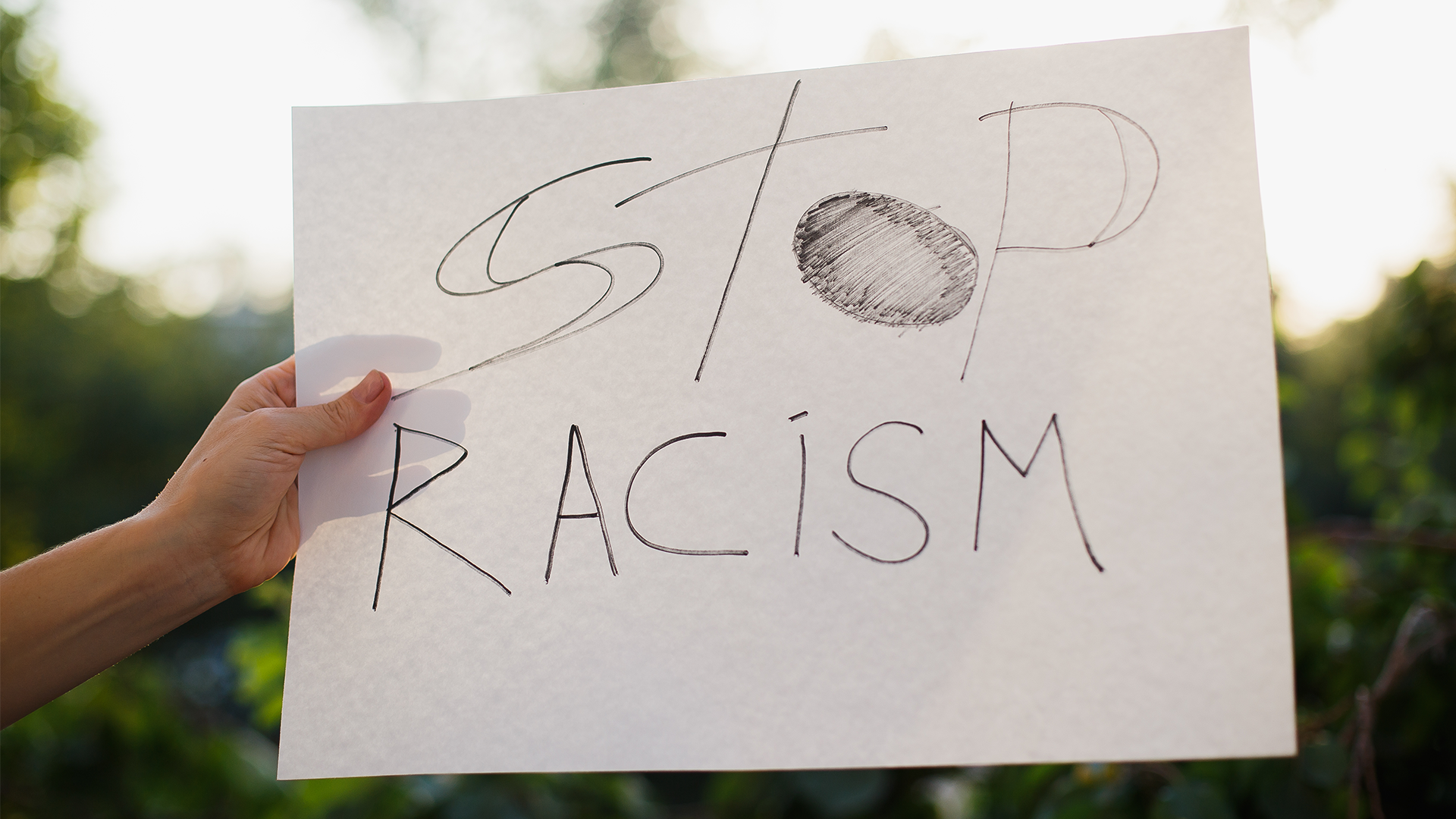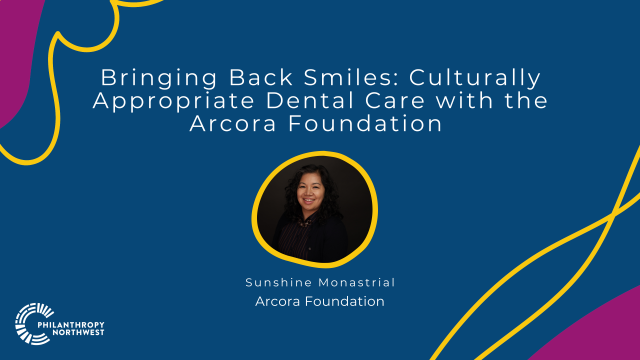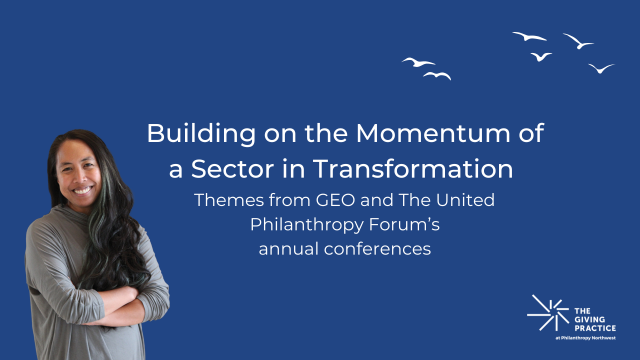
This article was originally published by the Anchorage Press on June 3, 2020. See the original post here. Elizabeth Ripley serves on Philanthropy Northwest's board as the vice chair of board operations and is the CEO of the Mat-Su Health Foundation.
My heart goes out to George Floyd, his family and to people of color across the United States. Our nation was built on racist ideas that defended slavery and the exploitation of people of color for white people to thrive economically. Racism has been baked into our systems, leaving a legacy of inequity in America and shorter lives for people of color. Mr. Floyd is the latest victim, one of so very many.
Racism is insidious. It forms in comments we make to our children. They hear how we talk about someone, about a group of people over time. They hear us mention our beliefs and how the world works. They hear us explain people’s behavior, choices and lot in life. Because most of us tend to surround ourselves with people who reinforce our world views and experiences, these statements and beliefs are often reinforced by relatives, friends and community members. Children of course experience cognitive dissonance. They see the statements don’t always match reality, but over time and with much reinforcing, they learn to tune out the cognitive dissonance.
That was the case in my own life. While my parents explained “we’re all created equal in the eyes of God,” my experience showed otherwise. I heard my aunts and uncles use words forbidden in my house to describe African Americans. These same relatives worked with people of color, had Black friends and yet still made racist comments. It was puzzling to me.
When my neighborhood in Prince Georges County, MD was selected for inclusion in a social experiment to reduce segregation in schools, I went from a cute elementary school with pictures on the walls to a dilapidated school with broken windows right next to the District of Columbia line. We took a “field trip” with our parents on the bus to our new school. I only remember the bus ride home where all the parents cried.
I transferred to this school in fourth grade. That year when I won a footrace against Charlene, who was Black, I thought she would beat me up. I was afraid. Charlene of course did not beat me up. She congratulated me. Why did I think she would hurt me? Because I had already been ingrained to fear Black skin by the time I was nine. It happened insidiously in my short life.
As an elementary student, I could tell those two schools were not funded equitably. They relied on property taxes, just like Mat-Su does today. If you live in a rich neighborhood, the school benefits from more resources. If you live in a poor neighborhood, your school has extra challenges for the same funding. If your borough or county is poorer, there’s less money for teacher salaries, supplies and infrastructure. It’s one example of structural racism. In response to this “bussing mandate,” most families on my street pulled their kids out of public school and sent them to private school. These families had options that poorer families didn’t have.
We’ve designed communities that way. Because America excluded people of color from wealth-generating policies for centuries and removed them from resource-rich land, they tend to be poorer and live in poorer neighborhoods. I’ve been told no word exists in Alaska Native languages for poverty because it didn’t exist until whites subjugated Native access to resources.
Over the last 20 years, with the proliferation of cell phones, I have been stunned again and again with the brutality caught on camera that is inflicted on people of color. I realized this has been happening all along and in many different forums — but I didn’t know. I couldn’t see it. It never happened to me.
My son Noah has been pulled over by police several times. It’s usually at night after he’s been out with friends. I’ve never worried — not even once — that he wouldn’t be safe or addressed respectfully and thoughtfully by the officer. He even got in trouble once in college and ran from the police. They didn’t shoot him in the back. Why would they? He was running AWAY.
When I speak with my Alaska Native and African American colleagues about our worries for our children, they cry. They are terrified their children will get pulled over and don’t have the same faith in how they will be treated. I can’t imagine the stress and worry about that. What if their children do something stupid and run from the police? Camera footage on a monthly basis shows they might be shot.
In 2018, I attended an Undoing Racism training with colleagues, Mat-Su Borough School District representatives, and local health and human services providers. Several young women shared their experiences in Mat-Su high schools. They explained the level of racism they experienced correlated to the darkness of their skin. They lamented how they experienced racist comments and actions much more frequently than their siblings whose skin was lighter. They expressed so much sorrow and stress — it was heartbreaking.
People of color are subject to daily micro-aggressions and implicit bias in the workplace, school and community. Some are subtle comments. Others are more obnoxiously public. I’ve read racist comments on Facebook by public officials from Mat-Su. This creates toxic stress for people of color and takes a vicious toll on their health and life expectancy. People of color have lower health outcomes for the same diseases due to biases in treatment and access. Even wealthy, educated Black women die disproportionately in childbirth. While higher education levels translate to higher life expectancy at the population level for whites, college-educated Black men have a lower life expectancy than white men without a high school diploma. If for some reason we didn’t understand the disproportionality of disease and death for people of color before now, the coronavirus laid that bare for us all to see. The COVID-19 death rates for people of color are disproportionately higher than their percent of the population in every region of America.
As people of privilege, whites can’t see the structural racism built into our financial, educational and healthcare systems. We benefit from this structural racism and so do our children. If we don’t do anything, if we are passive, we actually help to proliferate racism. We must all examine our thoughts, words, world views and actions.
White people need to change these systems so they work for all people. We need to call out racism when we see it. George Floyd was murdered! We need to ensure our hiring, education, law enforcement and treatment practices are just. People of color are screaming for us to pay attention and make changes. We have let them down time and again. Let’s make George Floyd the VERY LAST casualty of racism in our country.


